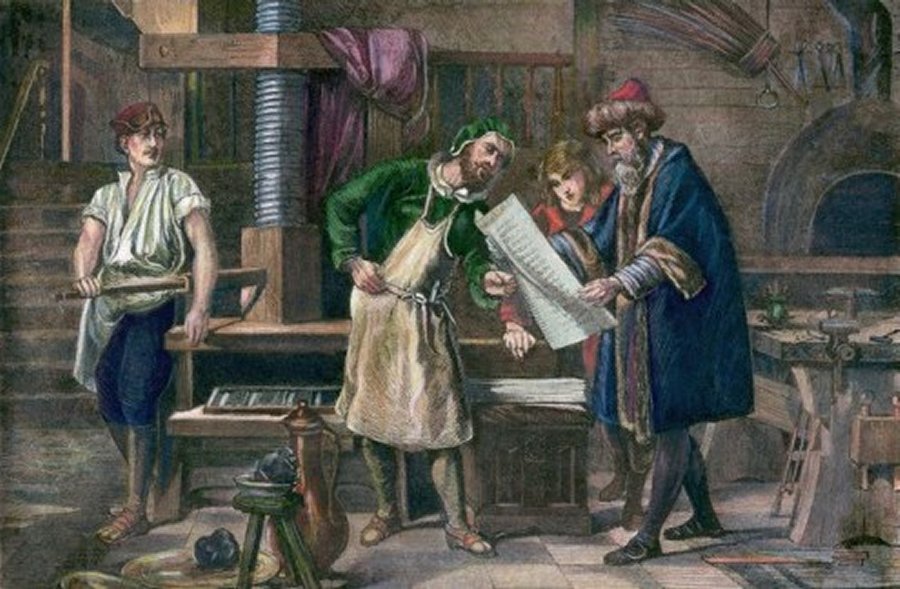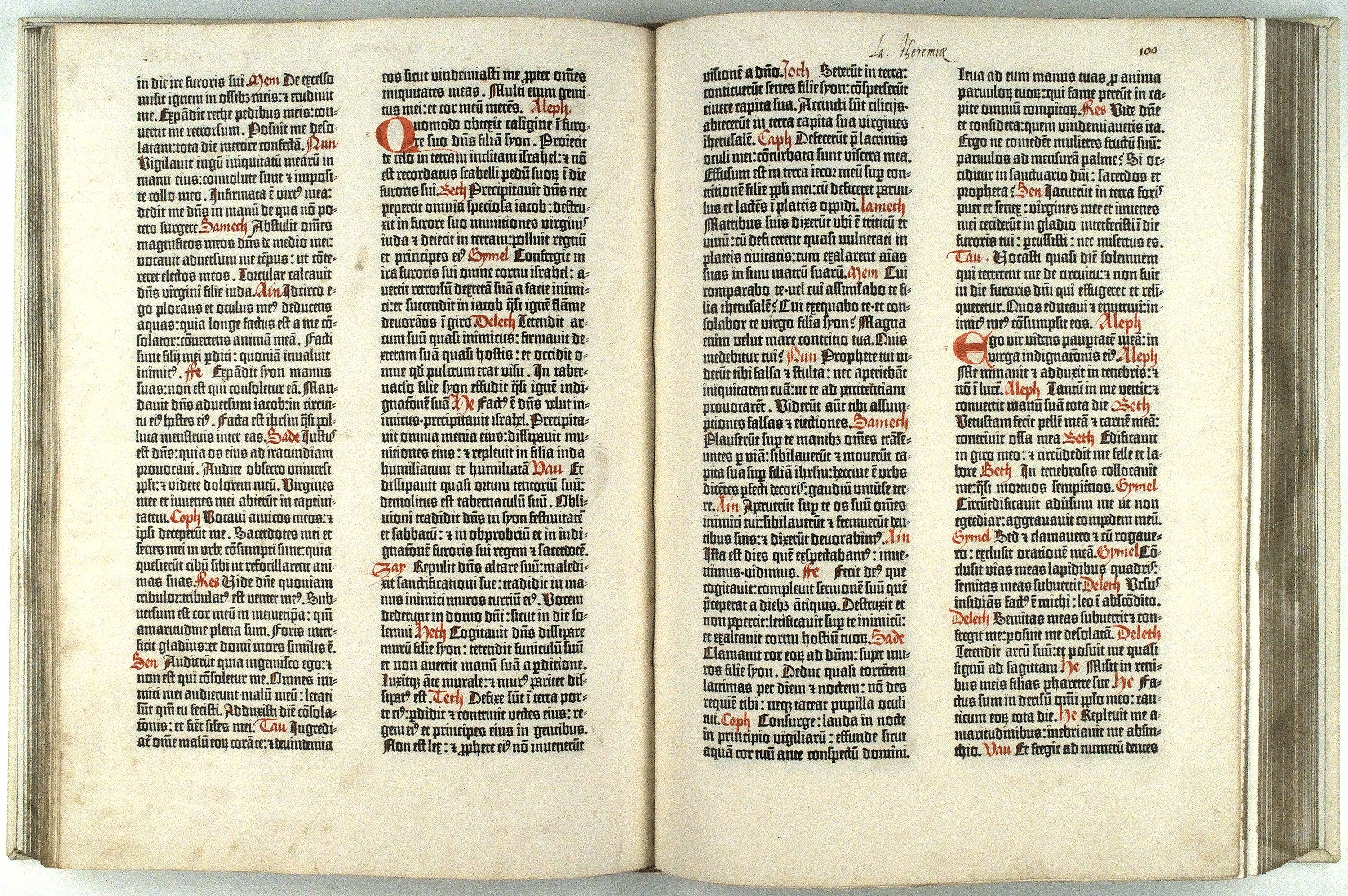On This Day In History: Gutenberg Prints The First Bible – On Feb 23, 1455
MessageToEagle.com – On February 23, 1455, Europe’s first mass-produced book – the Gutenberg Bible – was printed with movable type in Mainz, Germany. The book was a Latin language Bible.
It was one of the most significant events that took place in human history. Prior to 1455, books were mainly in possessions of very wealthy and influential people. The books were definitely not cheap.
Copying was long, tedious work. For most of its long history, the Bible was copied by hand. It would take a single monk 20 years to transcribe it.

The brilliant invention of Johann Gutenberg’s printing press, helped to popularize books and the information they contained.
His invention revolutionized the distribution of knowledge by making it possible to produce many accurate copies of a single work. Thus, the printed books could easier reach much wider population.
Gutenberg was not a rich man, but he wanted to spread books, so he borrowed money in 1448, invented and built his printing press, which used movable type.
He made little money from his printing system but in 1455, he was able to demonstrate the power of the printing press by selling copies of a two-volume Bible (Biblia Sacra) for 300 florins each.

This was the equivalent of approximately three years’ wages for an average clerk, but it was significantly cheaper than a handwritten Bible.
It is not known how many copies of the Bible were printed–estimates suggest about 150 to 180. Today, 48 copies in a variety of states are in existence.
Complete vellum copies may be found in Paris’s Bibliotheque Nationale, London’s British Library, Washington, D.C.’s Library of Congress and Göttingen State and University Library in Germany.
Additional incomplete and paper copies are scattered across the world in educational institutions and private collections.
First version of this article was originally published on February 23, 2016.
MessageToEagle.com
Expand for references









